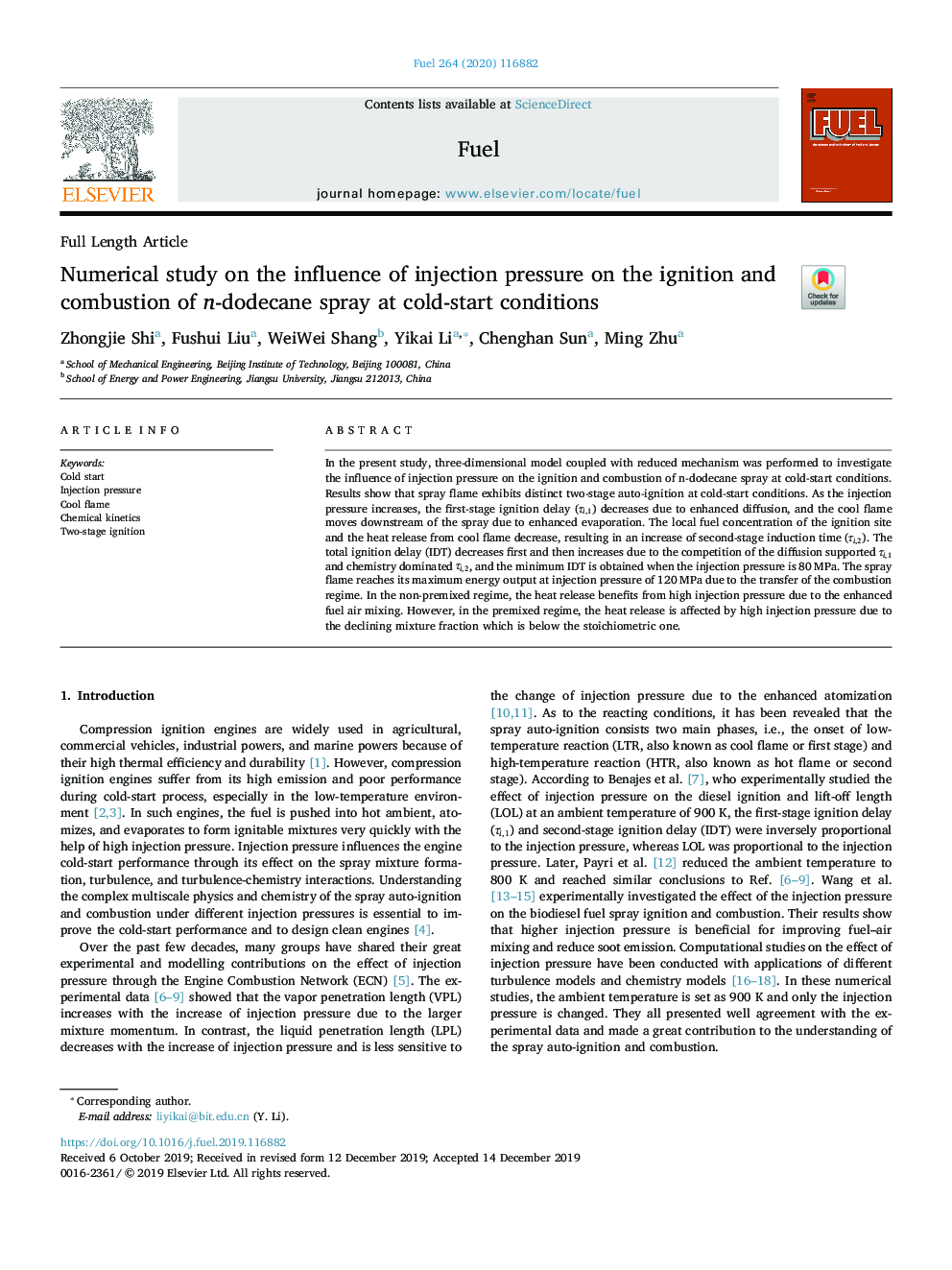| Article ID | Journal | Published Year | Pages | File Type |
|---|---|---|---|---|
| 13416240 | Fuel | 2020 | 10 Pages |
Abstract
In the present study, three-dimensional model coupled with reduced mechanism was performed to investigate the influence of injection pressure on the ignition and combustion of n-dodecane spray at cold-start conditions. Results show that spray flame exhibits distinct two-stage auto-ignition at cold-start conditions. As the injection pressure increases, the first-stage ignition delay (Ïi,1) decreases due to enhanced diffusion, and the cool flame moves downstream of the spray due to enhanced evaporation. The local fuel concentration of the ignition site and the heat release from cool flame decrease, resulting in an increase of second-stage induction time (Ïi,2). The total ignition delay (IDT) decreases first and then increases due to the competition of the diffusion supported Ïi,1 and chemistry dominated Ïi,2, and the minimum IDT is obtained when the injection pressure is 80Â MPa. The spray flame reaches its maximum energy output at injection pressure of 120Â MPa due to the transfer of the combustion regime. In the non-premixed regime, the heat release benefits from high injection pressure due to the enhanced fuel air mixing. However, in the premixed regime, the heat release is affected by high injection pressure due to the declining mixture fraction which is below the stoichiometric one.
Related Topics
Physical Sciences and Engineering
Chemical Engineering
Chemical Engineering (General)
Authors
Zhongjie Shi, Fushui Liu, WeiWei Shang, Yikai Li, Chenghan Sun, Ming Zhu,
